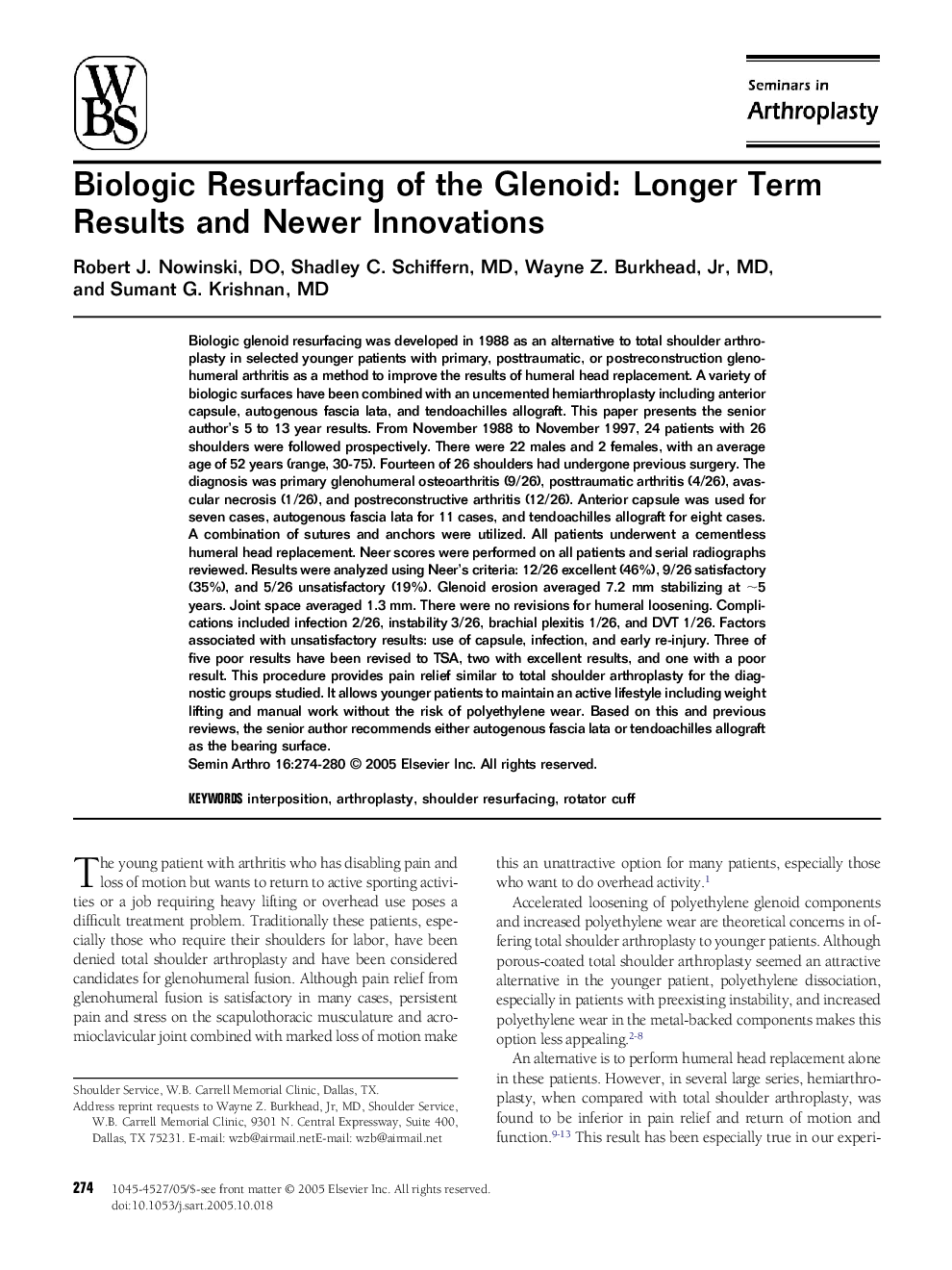| کد مقاله | کد نشریه | سال انتشار | مقاله انگلیسی | نسخه تمام متن |
|---|---|---|---|---|
| 9359379 | 1268459 | 2005 | 7 صفحه PDF | دانلود رایگان |
عنوان انگلیسی مقاله ISI
Biologic Resurfacing of the Glenoid: Longer Term Results and Newer Innovations
دانلود مقاله + سفارش ترجمه
دانلود مقاله ISI انگلیسی
رایگان برای ایرانیان
کلمات کلیدی
موضوعات مرتبط
علوم پزشکی و سلامت
پزشکی و دندانپزشکی
ارتوپدی، پزشکی ورزشی و توانبخشی
پیش نمایش صفحه اول مقاله

چکیده انگلیسی
Biologic glenoid resurfacing was developed in 1988 as an alternative to total shoulder arthroplasty in selected younger patients with primary, posttraumatic, or postreconstruction glenohumeral arthritis as a method to improve the results of humeral head replacement. A variety of biologic surfaces have been combined with an uncemented hemiarthroplasty including anterior capsule, autogenous fascia lata, and tendoachilles allograft. This paper presents the senior author's 5 to 13 year results. From November 1988 to November 1997, 24 patients with 26 shoulders were followed prospectively. There were 22 males and 2 females, with an average age of 52 years (range, 30-75). Fourteen of 26 shoulders had undergone previous surgery. The diagnosis was primary glenohumeral osteoarthritis (9/26), posttraumatic arthritis (4/26), avascular necrosis (1/26), and postreconstructive arthritis (12/26). Anterior capsule was used for seven cases, autogenous fascia lata for 11 cases, and tendoachilles allograft for eight cases. A combination of sutures and anchors were utilized. All patients underwent a cementless humeral head replacement. Neer scores were performed on all patients and serial radiographs reviewed. Results were analyzed using Neer's criteria: 12/26 excellent (46%), 9/26 satisfactory (35%), and 5/26 unsatisfactory (19%). Glenoid erosion averaged 7.2 mm stabilizing at â¼5 years. Joint space averaged 1.3 mm. There were no revisions for humeral loosening. Complications included infection 2/26, instability 3/26, brachial plexitis 1/26, and DVT 1/26. Factors associated with unsatisfactory results: use of capsule, infection, and early re-injury. Three of five poor results have been revised to TSA, two with excellent results, and one with a poor result. This procedure provides pain relief similar to total shoulder arthroplasty for the diagnostic groups studied. It allows younger patients to maintain an active lifestyle including weight lifting and manual work without the risk of polyethylene wear. Based on this and previous reviews, the senior author recommends either autogenous fascia lata or tendoachilles allograft as the bearing surface.
ناشر
Database: Elsevier - ScienceDirect (ساینس دایرکت)
Journal: Seminars in Arthroplasty - Volume 16, Issue 4, December 2005, Pages 274-280
Journal: Seminars in Arthroplasty - Volume 16, Issue 4, December 2005, Pages 274-280
نویسندگان
Robert J. DO, Shadley C. MD, Wayne Z. MD, Sumant G. MD,